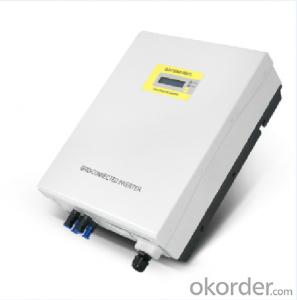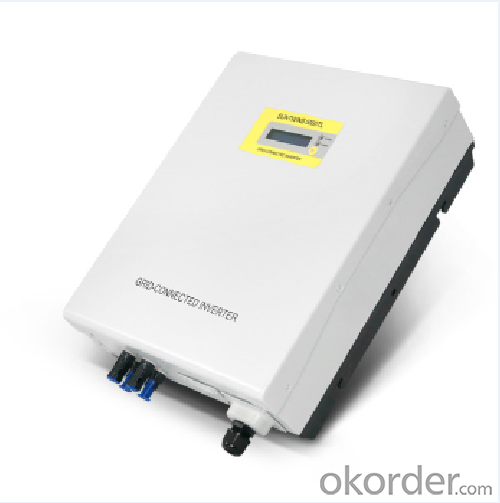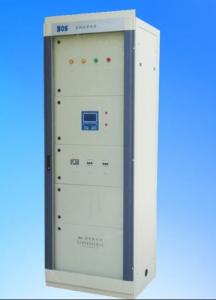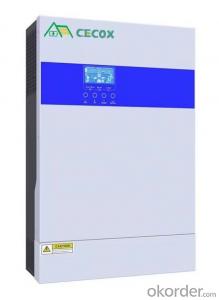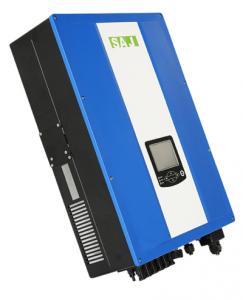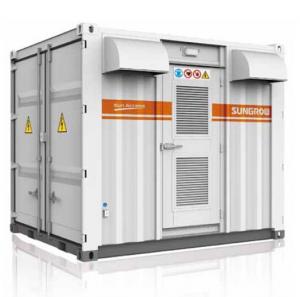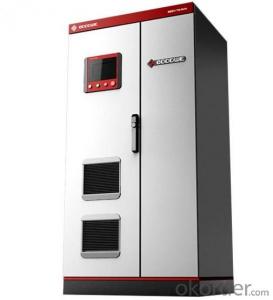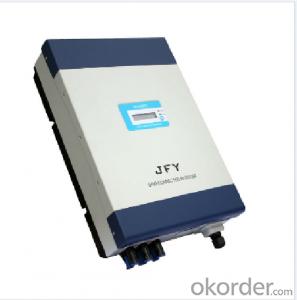Micro Solar Inverter 5kW 2MPPTs 5000TL On-Grid Inverter
- Loading Port:
- Qingdao
- Payment Terms:
- TT OR LC
- Min Order Qty:
- 50000 watt
- Supply Capability:
- 3000000 watt/month
OKorder Service Pledge
OKorder Financial Service
You Might Also Like
1. Structure of Solar On-grid Inverter 5kw 2MPPTs 5000TL Description
A solar inverter, or PV inverter, or Solar converter, converts the variable direct current (DC) output of a photovoltaic (PV) solar panel into a utility frequency alternating current (AC) that can be fed into a commercial electrical grid or used by a local, off-grid electrical network. It is a critical BOS–component in a photovoltaic system, allowing the use of ordinary AC-powered equipment. Solar inverters have special functions adapted for use with photovoltaic arrays, including maximum power point tracking and anti-islanding protection.
2. Main Features of the Solar On-grid Inverter 5kw 2MPPTs 5000TL
﹒2 MPPT channels, new generation technology
﹒Two high speed MPPT for real time power tracking and improved energy harvesting
﹒High frequency transformer operation for highest efficiency: 97.4% (97.0% Euro)
﹒Certified grid connected operation according to the international standards
﹒True Sine Wave Output
﹒ Integrated RS-485/RS-232 serial communication
﹒Multi-language display
﹒2 MPPT channels can be independent or parallel, auto detecting operation
3. Solar On-grid Inverter 5kw 2MPPTs 5000TL Images
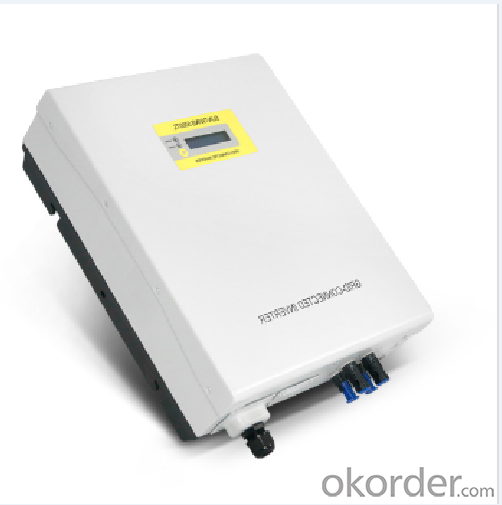
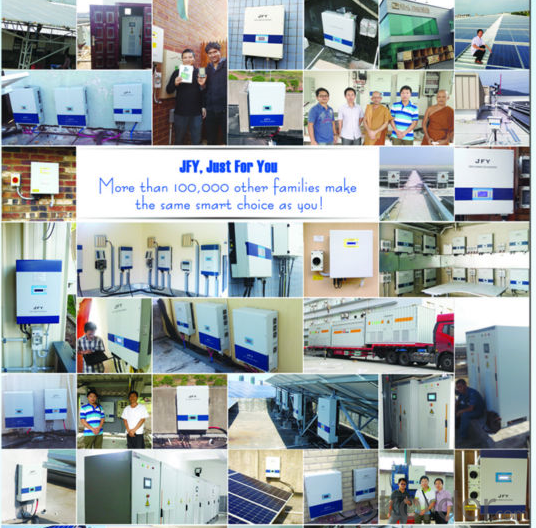
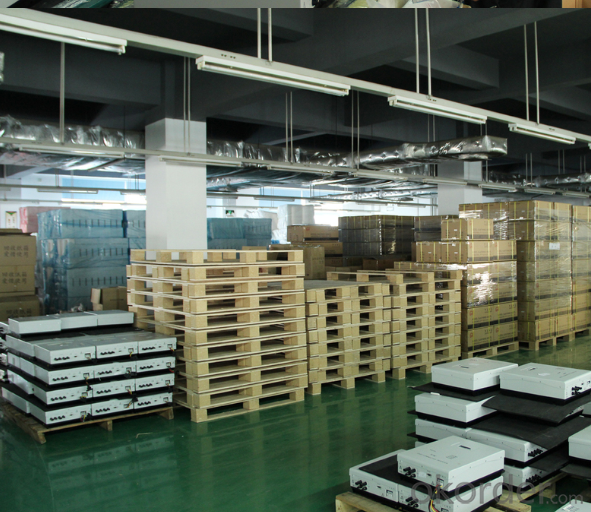

4. Solar On-grid Inverter 5kw 2MPPTs 5000TL Specification
CHARACTERISTICS | Suntwins 5000TL |
Input Data(DC side) | |
Max. DC power(Total) | 5300W |
Max.DC power per MPPT | 3000W |
Max. DC voltage | 500Vdc |
MPPT Operating range | 100~450Vdc |
Number of parallel inputs | 2 |
Number of MPPT trackers | 2 |
Max. input current per MPPT | IN1:15A/IN2:15A |
Output Data(AC side) | |
Nominal output power | 4950W |
Max. Output power | 4950W |
Nominal output current | 21.5A |
Max. output current | 25A |
Nominal AC voltage | 230Vac |
AC voltage range * | 190~265Vac |
Nominal AC grid frequency | 50Hz |
AC grid frequency range* | 50 ± 5 Hz |
Power factor(cos φ) | >0.99 |
Harmonic distortion(THDI) | <3%(at nominal output power) |
Efficiency | |
Max. efficiency | 97.4% |
Euro efficiency | 97.0% |
MPPT efficiency | 99.6% |
Genaral data | |
Dimensions (W / D / H) | 345*152*435mm |
Net weight | 18Kg |
Operating temperature range | –25 °C ~ +60 °C |
Noise emission (typical) | ≤ 25 dB(A) |
Power consumption at night | 0 W |
Electrical isolation | No |
Cooling concept | Natural cooling |
IP Code | IP65 |
Communication | RS-232(RS485 is optional) |
5. FAQ of Solar On-grid Inverter 5kw 2MPPTs 5000TL
Q1. What is the difference between inverter and solar inverter?
A1. Inverter only has AC inpput, but solar inverter both connect to AC input and solar panel, it saves more power.
Q2. What is the difference between MPPT&PWM?
A2. MPPT has higher efficiency, it can track the max power point and won't waste energy.
Q3. What is the waranty of product?
A3. 12 months.
- Q: What is the role of a surge protector in a solar inverter?
- The role of a surge protector in a solar inverter is to protect the sensitive electronic components of the inverter from power surges or voltage spikes that may occur in the electrical grid. By diverting excess voltage away from the inverter, it helps to prevent damage and ensure the reliable operation of the solar system.
- Q: Photovoltaic grid-connected inverter without DC emc how will happen
- Solar photovoltaic power generation technology is the use of solar cells, the photovoltaic effect of semiconductor materials, solar radiation can be directly converted into a new type of power generation system, solar energy is a radiant energy, solar power means --- to direct conversion of sunlight Into electricity,
- Q: What are the key features to consider when purchasing a solar inverter?
- When purchasing a solar inverter, some key features to consider include the inverter's power rating, efficiency, type of inverter (string or micro), warranty, monitoring capabilities, and whether it has additional features like grid support or battery compatibility. These features play a vital role in determining the performance, reliability, and compatibility of the inverter with your solar system.
- Q: How does the voltage regulation affect the performance of a solar inverter?
- Voltage regulation is crucial for the optimal performance of a solar inverter. It ensures that the output voltage of the inverter remains within a specific range, typically the utility grid's voltage standards. Proper voltage regulation prevents overloading or underloading of the electrical devices connected to the inverter, safeguarding them from potential damage. Additionally, maintaining a stable output voltage enhances the efficiency and reliability of the solar inverter, allowing it to deliver consistent power to the connected load and maximize the overall system performance.
- Q: What is the maximum AC current output of a solar inverter?
- The maximum AC current output of a solar inverter depends on its power rating or capacity. Typically, solar inverters have a maximum AC current output ranging from 5 to 50 amps, although larger commercial or utility-scale inverters can have much higher current outputs.
- Q: What is the role of a solar inverter in power quality management?
- The role of a solar inverter in power quality management is to convert the direct current (DC) generated by solar panels into alternating current (AC) that can be used to power electrical devices. In addition to this basic function, solar inverters also play a crucial role in managing power quality by ensuring a stable and consistent supply of electricity. They help regulate voltage levels, minimize voltage fluctuations, and mitigate harmonic distortions, thus improving the overall quality and reliability of the power generated from solar energy.
- Q: Are solar inverters weather-resistant?
- Yes, solar inverters are typically weather-resistant. They are designed to withstand various weather conditions such as rain, snow, and extreme temperatures. However, it is important to note that prolonged exposure to harsh weather conditions could potentially affect their performance and lifespan. Regular maintenance and proper installation can help ensure their durability and longevity.
- Q: How do you troubleshoot common issues with a solar inverter?
- To troubleshoot common issues with a solar inverter, first, check the display panel for any error messages or indicators. If there are none, ensure that all connections, including DC and AC cables, are securely tightened. Next, verify if there is sufficient sunlight reaching the solar panels. If the issue persists, inspect the fuse or circuit breaker and replace if necessary. Additionally, investigate the inverter's performance logs to identify any irregularities. If these steps do not resolve the problem, it is recommended to consult a professional solar technician for further assistance.
- Q: Can a solar inverter be used with a hybrid solar system?
- Yes, a solar inverter can be used with a hybrid solar system. A hybrid solar system combines solar power with other power sources, such as batteries or a backup generator. The solar inverter converts the direct current (DC) electricity generated by the solar panels into alternating current (AC) electricity, which can be used to power appliances and devices. Whether it is a grid-tied, off-grid, or hybrid solar system, a solar inverter is an essential component for converting and utilizing the solar energy effectively.
- Q: Are there any government incentives available for solar inverters?
- Yes, there are government incentives available for solar inverters in many countries. These incentives are aimed at promoting the adoption of renewable energy and reducing carbon emissions. One common incentive is the solar investment tax credit (ITC) in the United States, which allows homeowners and businesses to deduct a percentage of their solar installation costs from their federal taxes. In some countries, such as Germany, there are feed-in tariffs that require utility companies to pay a premium for the electricity generated by solar inverters. Additionally, some local governments offer grants or rebates for installing solar inverters or offer low-interest loans to finance the purchase and installation of the equipment. It is important to check with your local government or relevant authorities to understand the specific incentives available in your region.
Send your message to us
Micro Solar Inverter 5kW 2MPPTs 5000TL On-Grid Inverter
- Loading Port:
- Qingdao
- Payment Terms:
- TT OR LC
- Min Order Qty:
- 50000 watt
- Supply Capability:
- 3000000 watt/month
OKorder Service Pledge
OKorder Financial Service
Similar products
Hot products
Hot Searches
Related keywords
